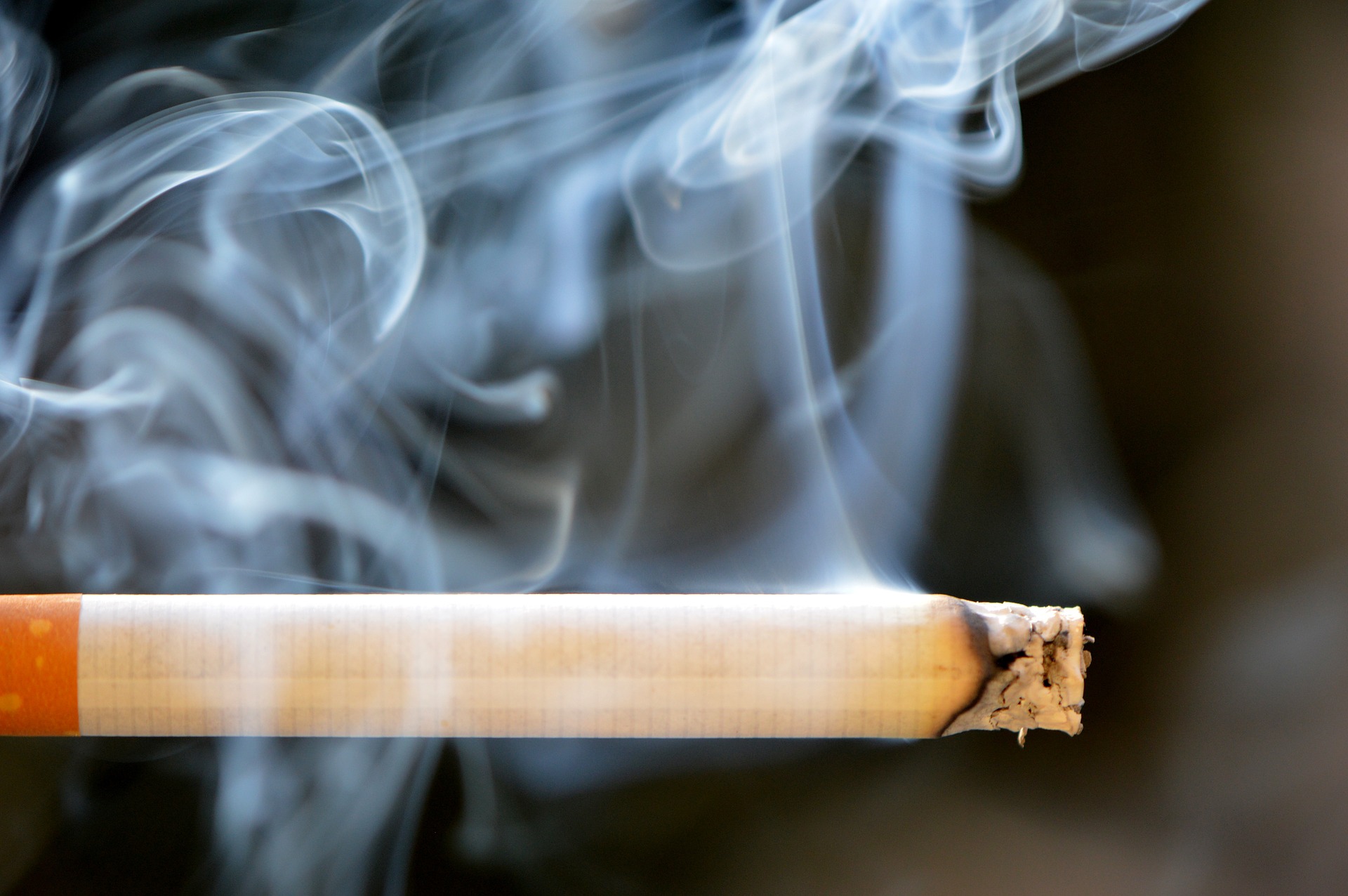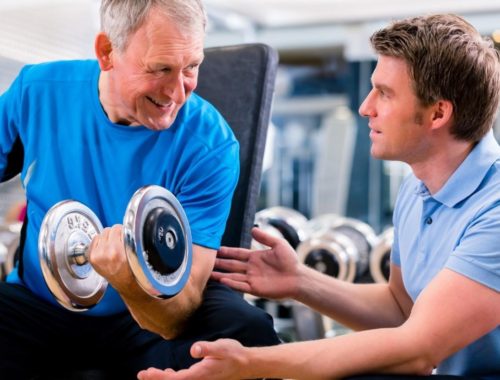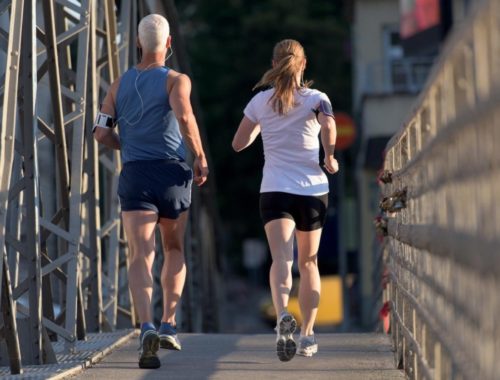Boost
Top 5 Lifestyle Changes to Improve Your Cancer Prevention

Some causes of cancer are beyond our control, but as many as 4 out of 10 cancer are preventable with the right lifestyle choices.
According to a study by the American Cancer Society, 42% of cancer cases and 45% of cancer deaths in the United States are caused by risk factors you can change.
A few small adjustments to your routine can make all the difference for your long term health. The following are the top ranked lifestyle changes you can make to reduce your cancer risk.

5. Physical activity
According to the data from 2014 studied by the American Cancer Society, lack of exercise played a role in 2.9% of cases of cancer and 2.2% of cancer deaths.
According to the National Cancer Institute, the following cancers have the strongest connection to physical activity:
Colon Cancer
- 16.3% of colorectal cancers are linked to lack of exercise.
- Studies have also found that exercise can improve survival rates for patients with stage IV colon cancer.
Endometrial/Uterine Cancer (cancer of the lining of the uterus)
- Physical activity is factored into 26.7% of uterine cancers.
- However, this connection is possibly caused by being overweight (from lack of exercise), which is known risk for this type of cancer.
Breast Cancer
- For women, lack of exercise is linked to 3.9% of breast cancers.
How Exercise Affects Cancer Risk
Exercise affects the body in several ways that can influence cancer prevention.
Getting regular physical exercise can:
- Lower hormones levels linked to cancer development, like insulin and estrogen
- Keep you at a healthy weight to avoid the cancer risks associated with obesity
- Reduce inflammation
- Allow food to pass through your body more quickly, reducing your digestive tract’s exposure to cancer-causing substances
Prevention Strategy: Exercise Regularly
Staying active doesn’t have to mean going to the gym everyday. It can include taking the stairs instead of the elevator or going for a quick walk during a coffee break.
Consider the following exercise tips:
- Try to get in at least 2.5 hours of moderate intensity exercise each week
- Moderate intensity activities are those those you can do while talking, but not while singing (take about as much effort as a brisk walk)
- Activities should be done for at least 10 minutes per session
- Spread out activities throughout the week
- With enough exertion, even everyday activities like household chores count toward your exercise goals

4. UV radiation
According to the American Cancer Society, more people are diagnosed with skin cancer in the USA every year than all other cancers combined.
The 2014 data studied showed that UV radiation contributed to almost 5% of cancer cases.
Exposure to UV rays, from the sun or indoor tanning, leads to more than 90% of basal and squamous cell skin cancers. UV exposure is also strongly linked to forming melanomas, the most fatal type of skin cancer.
How UV Radiation Affects Cancer Risk
Skin cancers start when UV radiation damages the DNA of the genes that control skin cell growth.
There are 2 types of UV rays that affect the skin in different ways:
- UVA rays cause skin damage, like wrinkles, and can lead to skin cancer. Most tanning beds give off large amounts of UVA rays.
- UVB rays lead to sunburns and are thought to cause most skin cancer
Prevention Strategy: Limit Your Exposure
When planning a day outside, enjoy the sun safely by making sure to:
- Avoid direct exposure to the sun at its peak (10 a.m. to 4 p.m.)
- Wear a hat with at least a 3 inch brim
- Use UV-protective sunglasses
- Cover as much of your skin as possible and consider using UPF-rated clothing
- Wear broad spectrum sunscreen of at least SPF 30 even during cloudy days
- Apply sunscreen 15 minutes before exposure, and reapply every 2 hours
See our article on best sunscreen practices for more details on skin cancer and safety tips.

3. Alcohol
Drinking alcohol was connected to 5.6% of cancer cases and 4% of deaths for the data studied. Alcohol particularly increases the risk for the following cancers:
Upper digestive cancers (mouth, throat, voice box, and esophagus)
- Almost half of mouth and throat cancers in men (46.3%) and one-fourth (27.4%) in women were linked to alcohol use
- 3.5 drinks per day can lead to a 2-3 times higher risk for these cancers
Liver cancer
- Alcohol led to 24.8% of liver cancers in men and 11.9% in women
- 1 drink per day can lead to 1.1 times higher liver cancer risk
Colon Cancer
- Drinking is associated 17.1% of colorectal cancers in men and 8.1% in women
- 3.5 drinks per day can lead to a 1.5 times higher risk for these cancers.
Breast cancer
- Alcohol contributed to 6.4% of breast cancers in women
- 1 drink a day is linked with an increased risk of breast cancer
How Alcohol Affects Cancer Risk
When you drink, your body breaks down ethanol, alcohol’s intoxicating chemical, into a substance linked to cancer growth. This substance, called acetaldehyde, can start forming as soon as alcohol comes into contact with the bacteria in your mouth.
Alcohol can also increase your cancer risk by:
- Damaging body tissue it comes into contact with (which can lead to DNA mistakes that cause cancer)
- Limiting your cells’ ability to absorb cancer-preventing nutrients
- Increasing hormone levels linked to cancer risk (ex. estrogen)
- Boosting the toxic effects of other cancer-causing substances (ex. tobacco)
Prevention Strategy: Stop or Limit Your Drinking
The American Cancer Society guidelines recommend having no more than 2 drinks a day for men and 1 drink for women. This also defines what is considered a moderate level of drinking.
However, keep in mind there is no safe limit when it comes to cancer. Even light to moderate drinking can increase your risk for certain cancers.
Also, remember that safe serving sizes can be smaller than you expect. The National Institute of Alcohol Abuse and Alcoholism (NIAAA) defines a single drink serving as:
- 1.5 ounces of liquors that are 40% alcohol by volume (abv)
- 5 ounces of wine (12% abv)
- 12 ounces of beer (5% abv)
Try the following tips to help limit the risks of drinking:
- When enjoying a night out, consider non-alcoholic beverages or make every other drink non-alcoholic
- Don’t keep liquor at home or only buy alcohol for special occasions
- Keep track of your drinks and serving sizes
- Drink at your own pace; don’t try to keep up with others
- Seek support from friends and family to help each other follow a plan
If you or a loved one struggle with long-term, heavy drinking please consider resources available for support and guidance.
See our articles on the cancer risk of alcohol and heavy drinking for additional information.

2. Excess body weight
The 2014 data showed that obesity is responsible for 7.8% of cancer cases and 6.5% of cancer deaths.
Both obesity and being overweight are linked to several cancer risks. These categories are based on a scale known as the body mass index (BMI). BMI is calculated by dividing a person’s weight (in kilograms) by their height (in meters) squared.
Obesity is defined as having a BMI of 30.0 to 39.9, and overweight is considered 25.0 to 29.9.
Obesity is especially tied to the following cancers:
- Breast (in women past menopause)
- Colon and rectum
- Endometrium (lining of the uterus)
- Esophagus
- Kidney
- Pancreas
The following cancers are linked to both obesity or being overweight:
- Gallbladder
- Liver
- Non-Hodgkin lymphoma
- Multiple myeloma
- Cervix
- Ovary
- Aggressive forms of prostate cancer
There are also certain cancer risks related to excess belly fat, regardless of weight. This is especially true for colon and rectal cancer.
How Body Weight Affects Cancer Risk
While there is a strong connection between body weight and cancer, the link is not yet fully understood.
Possible ways body weight leads to cancer risk include:
- Chronic low-level inflammation caused by disorders related to weight (ex. ulcerative colitis or gallstones)
- Fat tissue produces excess amounts of estrogen (a risk factor for breast, endometrial, and ovarian cancers)
- Increased levels of insulin and insulin-like growth factor-1 (IGF-1)
- Fat cells produce hormones that may stimulate or limit cell growth
Prevention Strategy: Exercise & A Diverse, Plant-heavy Diet
In addition to the tips listed for physical activity, a well-balanced diet is a great way to maintain a healthy weight.
Red meats, processed meats, and refined carbs can all increase cancer risk. In addition to weight gain, these foods can cause inflammation, excess insulin, and exposure to DNA-damaging chemicals.
Meanwhile, eating as little as eating as little as 2.5 cups of fruits and veggies a day can significantly reduce the likelihood of developing cancer
Consider adding the following cancer-preventing habits to your diet:
- Use lean meats (fish or poultry) instead of red meats
- Replace a few servings of animal-based proteins with plant-based ones (ex. nuts)
- Use whole-grains (ex. oats, barley, and brown rice)
- Limit fats and use healthy options (ex. olive oil)
- Make veggies and leafy greens the biggest part of your diet
- Avoid all processed meat
For more information see our articles on cancer-preventing diet tips and the benefits of starting a plant-based diet.

1. Smoking
Smoking is the most well-known cause of cancer, along with being the deadliest.
According to the 2014 data, smoking is responsible for 19% of all cancer cases and nearly 29% of cancer deaths.
The U.S. Department of Health and Human Services reports that at least 69 of the chemicals inhaled through tobacco smoke cause cancer. And the chemicals in tobacco smoke is a hazard to smokers and non-smokers alike.
Secondhand smoke leads to approximately 7,300 lung cancer deaths in the United States each year among adult nonsmokers.
Smoking causes 80% of lung cancers, and is a risk factor for cancer of the:
- Mouth
- Larynx (voice box)
- Pharynx (throat)
- Esophagus (swallowing tube)
- Kidney
- Cervix
- Liver
- Bladder
- Pancreas
- Stomach
- Colon/rectum
- Myeloid leukemia
Smoking was found to cause almost half the deaths in 12 types of cancer.
How Smoking Affects Cancer Risk
Certain chemicals in tobacco smoke can cause serious damage to DNA, leading to cancer growth.
These chemicals can also weaken your immune system, making it difficult for your body to repair this damage and fight off cancer cells.
Even when going through cancer treatment, tobacco smoke can limit the benefits of chemotherapy and support tumor growth.
Prevention Strategy: Stop Smoking Immediately and Never Start
It’s never too late to stop smoking. While quitting may be difficult, it has many immediate health benefits.
According to the National Cancer Institute, smokers who quit before age 40 reduce their chance of dying prematurely from smoking-related diseases by about 90%. And quitting by age 45-54 reduces premature death by about two-thirds.
The American Cancer Society has several resources to help quit smoking and stay tobacco free.
Here are a few tips to help take the first steps toward quitting:
- Write down your reasons for quitting so you can look at them when you feel like smoking
- Pick a day within the next month as your “Quit Day” and make a strong commitment to follow through
- Tell your friends and family about your commitment, and set up a support system
- Decide on a plan (For example, using medications like nicotine replacement therapy, attending a support group, or other methods available)
When you feel the urge to smoke, remember the 4 D’s:
- Delay for 10 minutes, and wait for the craving to pass
- Deep breathe and picture your lungs filling with fresh, clean air.
- Drink water slowly and mindfully
- Do something else, especially if a certain activity triggered the craving.




